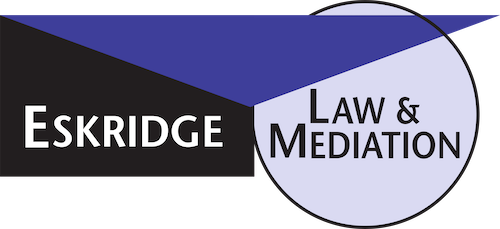October 31, 2018
The federal Rehabilitation Act of 1973 mandated that federal agencies and federally-funded programs ensure that their employees and participants with disabilities have access to the same opportunities as those without disabilities. On July 26, 1990, passage of the Americans with Disabilities Act (“ADA”) expanded this law to cover the private sector and state entities as well. The ADA was amended in 2008, clarifying the term “disability” to make it easier for individuals to seek protection under it.
On July 26, 1991, the United States Access Board first published its ADA Accessibility Guidelines for Buildings and Facilities (“ADAAG”). Links to the current versions of those standards can be found online at: https://www.access-board.gov/guidelines-and-standards.
Though the ADA became law in 1990, pre-1990 California businesses may find themselves being sued over alleged violations of the ADA, though their pre-1990 contractors were in full compliance with then-current building codes. Unfortunately, there is no “grandfather clause” written into the ADA.
The original form of California’s Disabled Persons Act (DPA), similar to the pre-ADA federal Rehabilitation Act of 1973, governed public facilities and was later expanded to include privately-owned buildings. Since 1992, the DPA has given persons with disabilities the right to equal access to all streets, walkways, public buildings, medical facilities, and public facilities. Both the DPA and the state’s Unruh Civil Rights Act (Unruh Act) now define any ADA violation as violation of their provisions and therefore actionable under state law as well as federal law.
These laws were amended in 2008, 2012, and 2015 to reduce the incidence of frivolous or abusive litigation aimed at extorting money from targeted businesses. Unfortunately, none of the amendments eliminated the award of automatic statutory damages or required that the building owner or business tenant first be given an opportunity to remedy the problem before litigation is filed. As a result, frivolous and abusive litigation based on these laws continues to be a problem.
Statutory Background: The ADA prohibits commercial facilities from discriminating against a disabled person by failing to provide access to the entities’ premises and services. [42 U.S.C. § 12101 et seq.] A person found to be disabled under the ADA can also bring a lawsuit against a commercial business in California under not only the ADA but also under California’s Unruh Civil Rights Act (California Civil Code section 51(f)) and the state’s Disabled Persons Act (California Civil Code sections 54 – 55.2.) These acts authorize a statutory penalty against business establishments for discriminating against persons with disabilities.
So what, as a business owner of a public facility, must you do to ensure you are not sued for an ADA or California disabilities act violation? If your place of public accommodation existed prior to January 26, 1992, and you now make an alteration to your facility, the alteration must be done in a manner that complies with the ADAAG. What actually complies with the ADAAG is a fact specific analysis. Here is an example: if an alteration could affect the usability of an existing access path to an area of the facility that contains a “primary function” (such as an entrance way) then a new accessible path of travel must be provided to the altered area. So if an alteration could obstruct the existing access ramp that leads to your entrance, then you must provide a new access ramp so that persons who need a ramp can still use your entrance. Or if the alteration could make your entrance too narrow for a wheelchair to pass through, you must provide another entrance that allows wheelchair access. The same is true for paths leading to other primary functions, such as exits, movement between floors, etc.
In addition, restrooms, telephones, and drinking fountains serving an altered area must be made accessible to the extent that cost is not “disproportionate” to the cost of the overall alteration. Disproportionality is defined in 28 CFR 36.403(1) and 49 CFR 37.43 as a sum not to exceed 20% of the cost of the alteration to the primary function area.
Whether or not you are not planning an alteration of your business facility, you can obtain an inspection to ensure that your business complies with current federal and state disability-access laws. There are numerous private inspection firms that provide this service for a fee.
Architectural barriers to people with disabilities include building features common in older facilities, such as narrow doors, a step or a round door knob at an entrance door, or a crowded check-out counter or store aisle. The ADA states that individuals with disabilities cannot be denied full and equal enjoyment of whatever type of good or service the business provides to its other customers or clients. Under the ADAAG, public accommodations covered by Title III of the ADA must remove architectural barriers in existing facilities, including communication barriers that are structural in nature, where such removal is “readily achievable.” Readily achievable means “easily accomplishable and able to be carried out without much difficulty or expense.” This requirement is discussed at length in 28 CFR 36.304.
Removing barriers by ramping a curb, widening an entrance door, installing visual alarms, or designating an accessible parking space is usually considered “readily achievable” by the ADAAG. Therefore, you may find your establishment being sued for not correcting these “readily achievable” barriers, even though your establishment was in full compliance with building codes when your establishment was built. This illustrates the importance of taking proactive measures such as getting an inspection and remedying any disability problems that the inspection turns up.
Need more information?
ESKRIDGE LAW may be contacted by phone (310/303-3951), by fax (310/303-3952) or by email (geskridge@eskridgelaw.net). Please visit our website at eskridge.hv-dev.com.
This article is based on the law as of the date posted at the top of the article. This article does not constitute the provision of legal advice, and does not by itself create an attorney-client relationship with Eskridge Law.
